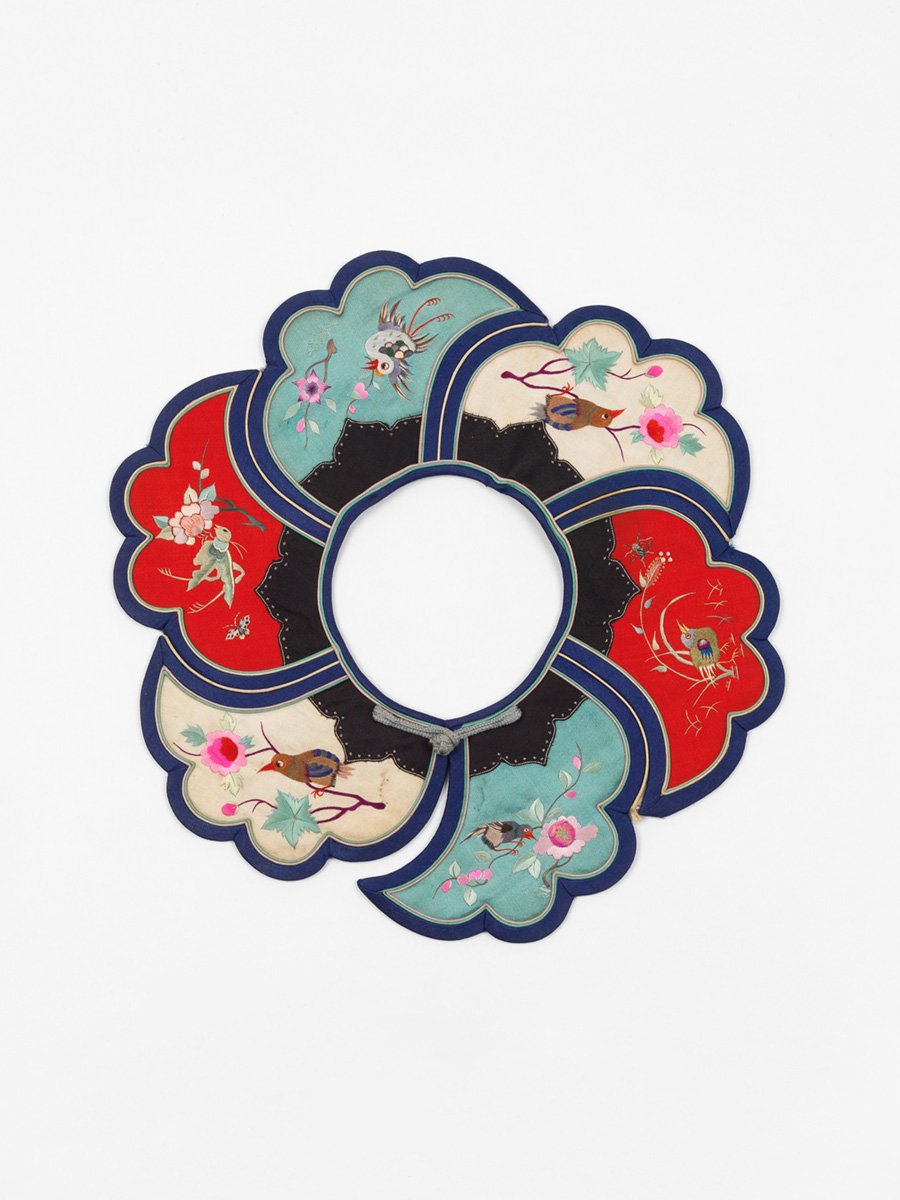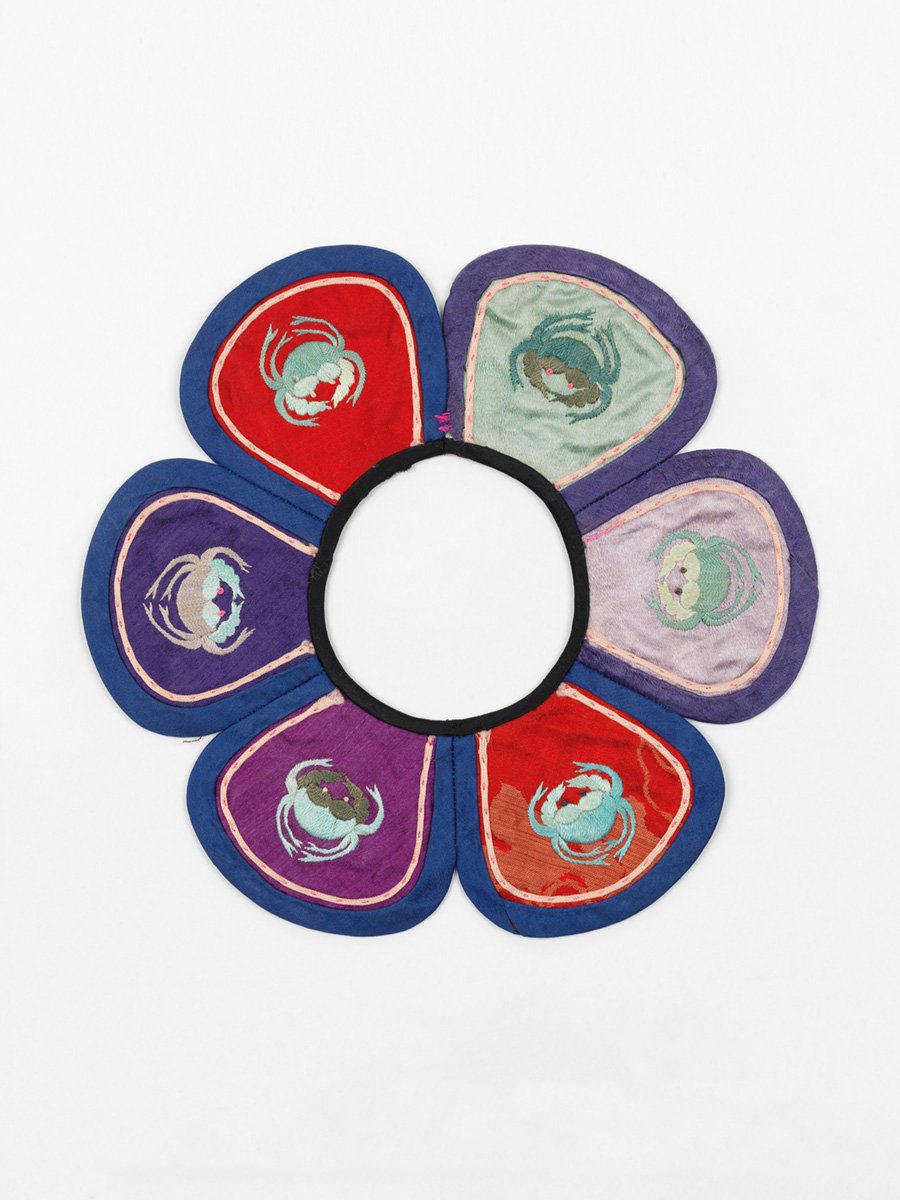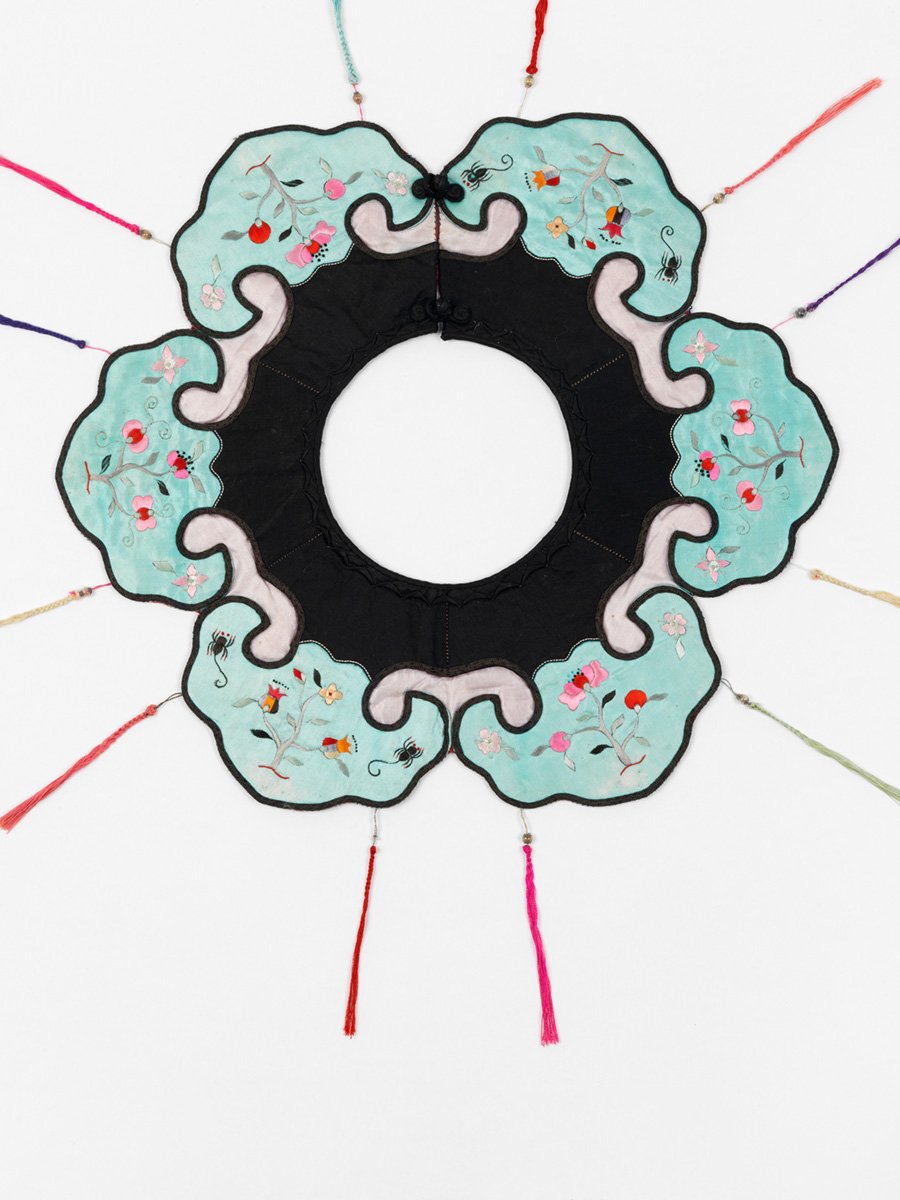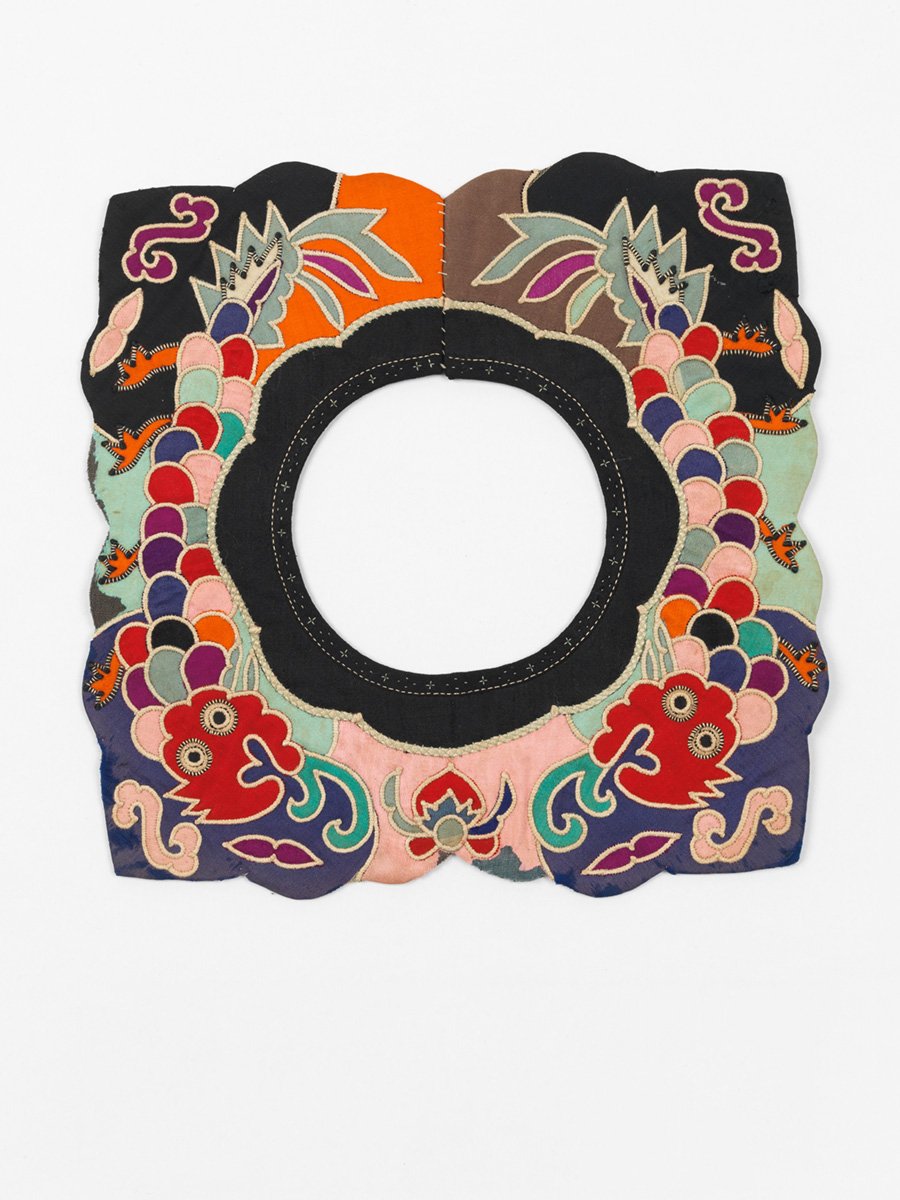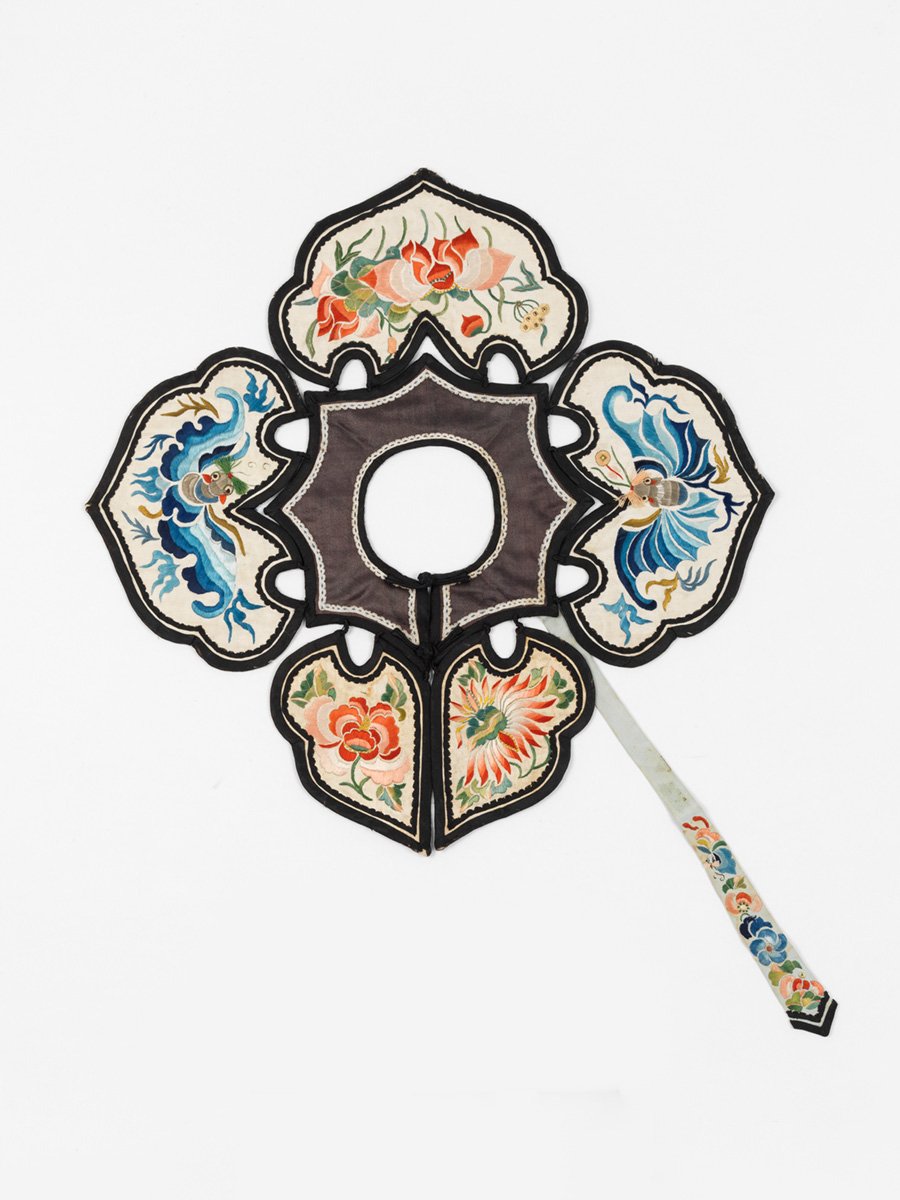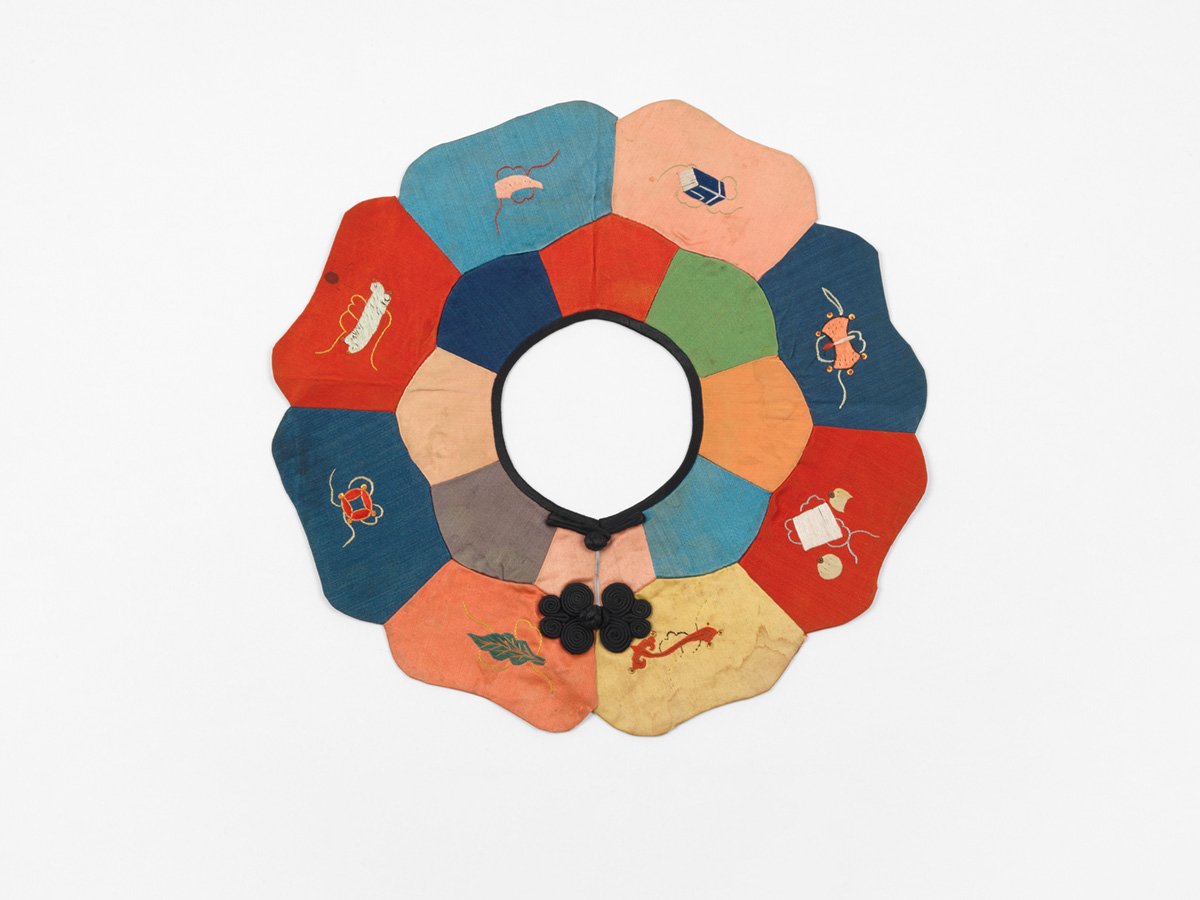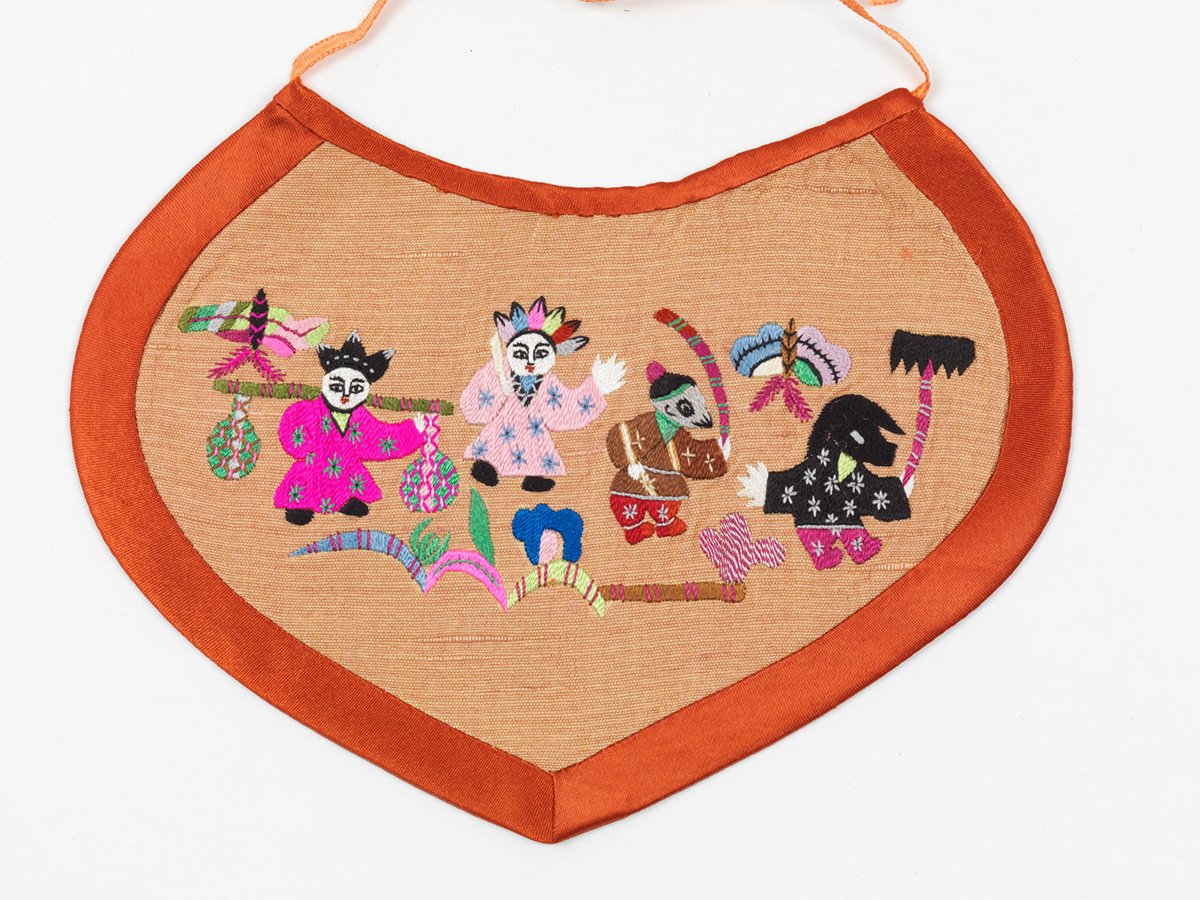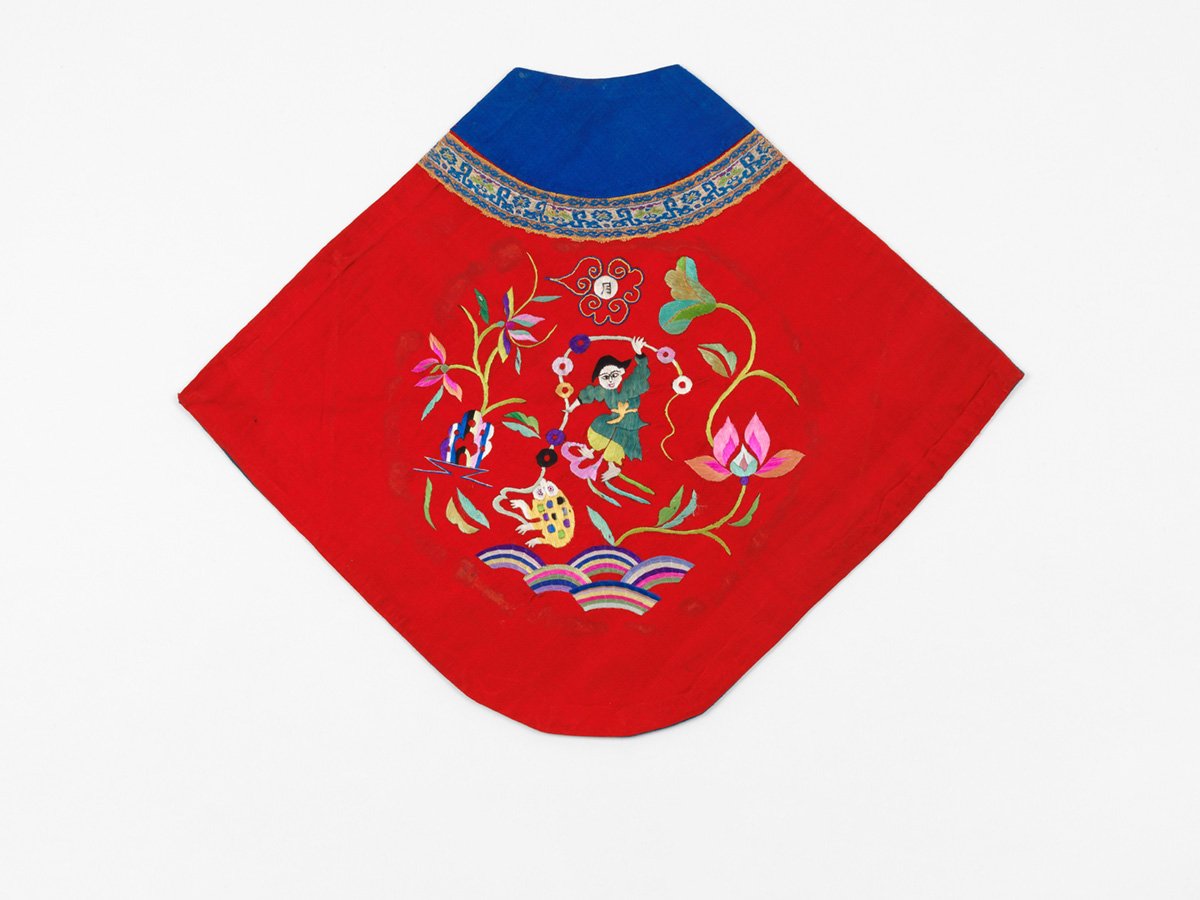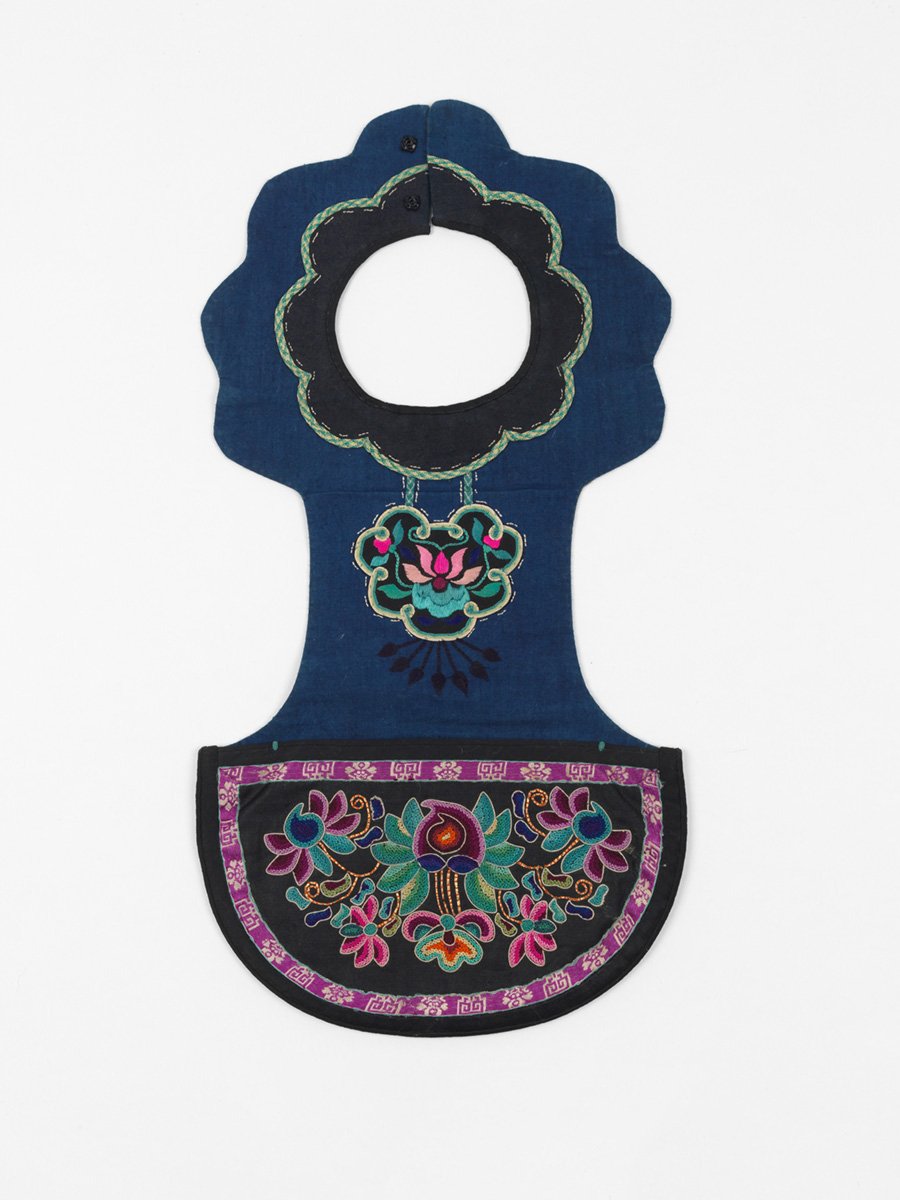From the moment a child is born, the mother will express her love for this child through all the seemingly mundane everyday objects that the child needs and uses. The bib is often the very first piece of accessory the baby uses. This tiny piece of fabric, secured around the child’s little neck, ties together the child’s first memories with his mother’s unending love. According to Chinese tradition, a child’s birth is always celebrated with the greatest elation. When the baby is one month old, family and friends celebrate at banquets and gifts are showered upon the baby. The mother’s side of the family, especially, is responsible for preparing a complete set of clothing for the baby – clothing and accessories that will cover the baby from head to toe. Included in this list is the bib, upon which there are often embroidered sayings and symbols wishing the newborn a long and successful life. As for du dou, the undergarment that covers the chest and abdomen, folklore traces its beginnings to the times of Nu Wa. It is believed that after creating mankind, the undergarment was the first piece of clothing that Nu Wa left for humans. Of course, the undergarment has its practical attributes. In Chinese households, young children are often told to take care not to “let stomachs catch a cold,” as the Chinese believe that even a gust of wind passing through one’s belly button could make a child sick. So the undergarment was traditionally worn to keep the belly protected. The undergarment is a piece of argyle-shaped cloth that covers the chest and belly, while the back is left open. The top is tied around the neck, and there are strings on either side of the waist that are tied behind the back. In times past, in hot weather, children could often be seen wearing just an undergarment. Think of the du dou as a backless undershirt.
The capelet was a very important piece of clothing in the olden days. Paintings and idols of Guan Yin (Goddess of Mercy) from the Sui Dynasty (6th – 7th centuries) always depict her wearing a capelet. In Tang Dynasty (AD 618-907) murals in Dun Huang caves, women of the higher classes are also depicted wearing capelets. Thus, it can be inferred that the use of capelets began no later than the Sui (AD 581-618) and Tang Dynasties. There is also reason to believe that capelets were even worn in the Qin-Han era (2 BC – 2AD). During the Jin (AD 265-420) and Southern-Northern Dynasties (AD 420-581), elaborately embroidered collars were worn. Capelets were called yun jian, or “cloud shoulder,” because their beauty and variations reminded people of moving clouds.
For centuries, whether in bibs, undergarments, or capelets, mothers have expressed their boundless love for their children. In every stitch and every thread on those small pieces of fabric, a mother’s hopes and dreams are sewn. Indeed, tied around her child’s neck, it is the ultimate symbol of a mother’s loving embrace.


